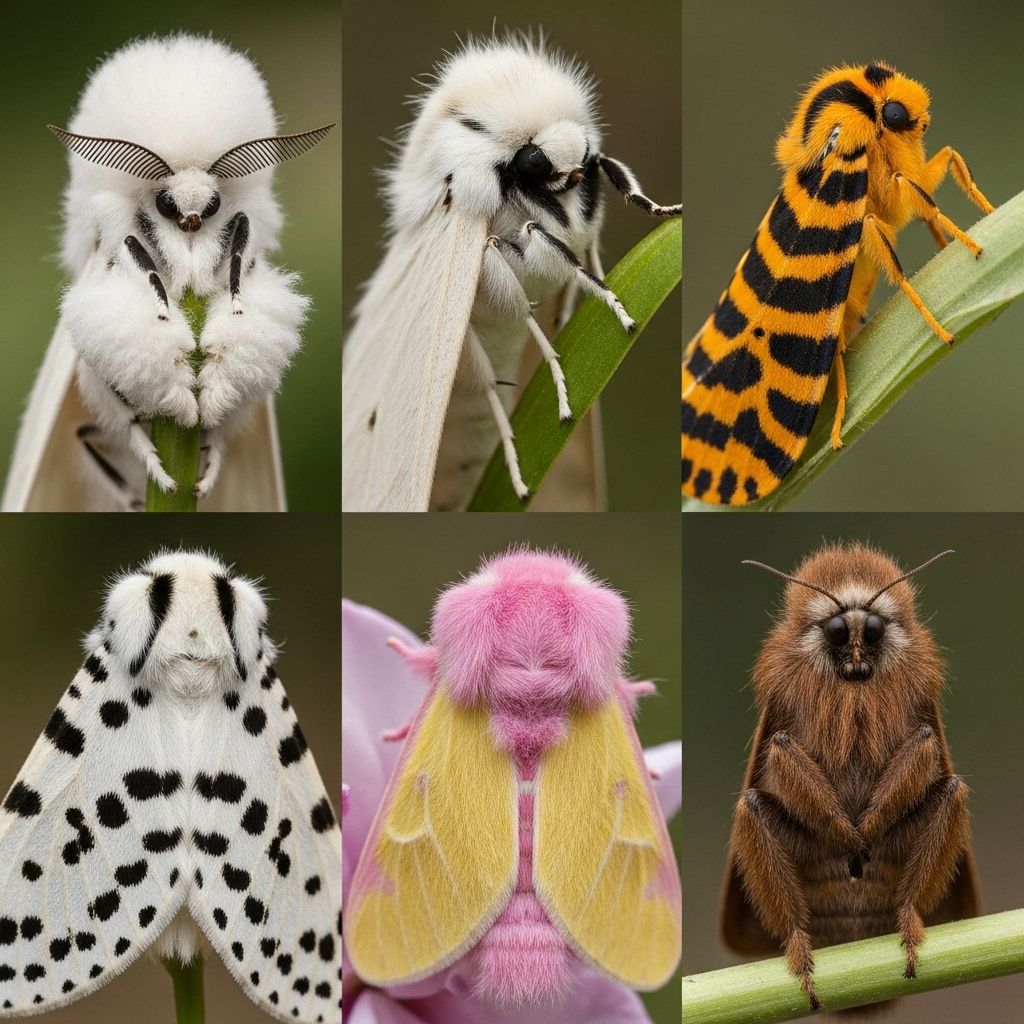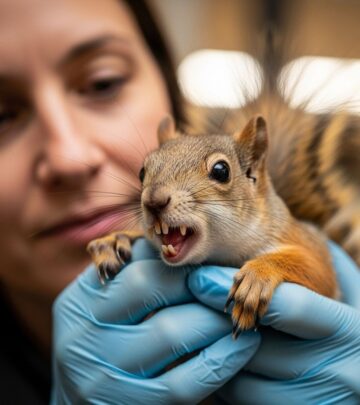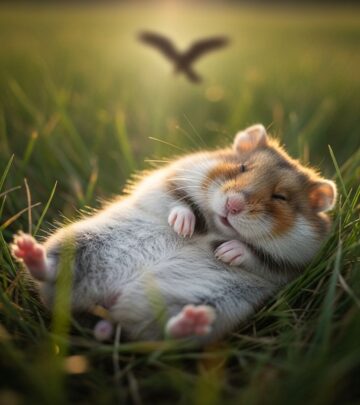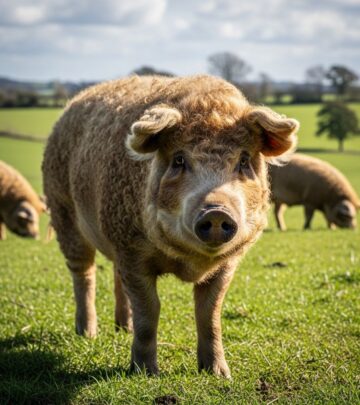Furry Moths: 6 Fluffy Species That Look Like Tiny Cats
Discover six of the fluffiest, most adorable moths that look so cute, you’d swear they were tiny kittens.

Image: HearthJunction Design Team
All About the 6 Furry Moths You Could Easily Mistake for a Cat
At first glance, it might sound unlikely that any insect could evoke the warm fuzziness of a kitten. But among the world’s diverse moth species, there are a few with coats so plush and appearances so whimsical, they could be mistaken for a tiny, magical cat. While these furry moths aren’t mammals and their “fur” is actually made of scales and hair-like structures, their colorful fluff and endearing faces have turned them into the darlings of both entomologists and animal lovers alike.
Let’s meet six of the world’s furriest, most fantastical moths—species whose adorable looks conceal fascinating natural histories and surprising behaviors. Whether you find them in the wild or admire them from afar, these moths embody the wondrous diversity of the insect world.
What Makes a Moth Furry?
Moths belong to the order Lepidoptera, which includes butterflies. Most moths are covered in scales, but certain species take this to the next level, boasting thick, plush “fur” that gives them a soft and fluffy appearance. This fur serves several crucial functions:
- Camouflage: Breaks up the moth’s outline in foliage.
- Warning: Bright colors and patterns may warn predators of toxicity.
- Insulation: Helps regulate temperature during chilly nights.
It’s important to note that, despite their fuzzy looks, this isn’t fur in the mammalian sense. Rather, it’s a dense layer of scales and specialized hairlike outgrowths called setae, unique to insects like moths and butterflies.
The Six Fluffy Moths You’ll Want to Cuddle (But Probably Shouldn’t)
Here are six of the fluffiest, most captivating moths that you might easily mistake for a plush toy or a miniature cat:
- Atlas Moth (Attacus atlas)
- Luna Moth (Actias luna)
- Cecropia Moth (Hyalophora cecropia)
- Rosy Maple Moth (Dryocampa rubicunda)
- Polyphemus Moth (Antheraea polyphemus)
- Io Moth (Automeris io)
1. Atlas Moth (Attacus atlas)
Known as one of the largest moths on the planet, the Atlas moth is an icon of the moth world. With a wingspan that can reach up to 10 inches (25 cm), these gentle giants are famous for their intricate orange, brown, and black wing patterns that cleverly mimic snake heads for defense against predators.
| Feature | Details |
|---|---|
| Wingspan | Up to 10 inches |
| Diet (adult) | None (does not feed) |
| Lifespan | 1–2 weeks as adults |
| Range | Tropical and subtropical Asia |
While their sheer size is jaw-dropping, the Atlas moth’s most distinctive feature is its thick, velvety scales and fuzzy thorax, making it look like a delicately spun plush toy.
Care Tips for Atlas Moths
- Provide a large enclosure with airflow, as adults need space to spread their broad wings.
- Offer foliage for perching, but remember adults do not eat—focus on the needs of the caterpillars if rearing from eggs.
Fun Fact
The Atlas moth’s caterpillars are bright green and can reach up to 5 inches long, adorned with their own set of waxy white spines.
2. Luna Moth (Actias luna)
The Luna moth is the ethereal fairy of the North American forests. Its pale green wings, long trailing tails, and plush, white-furred body make it an unforgettable sight. With a wingspan up to 4.5 inches, they are among the largest native moths in the U.S.
| Feature | Details |
|---|---|
| Wingspan | Up to 4.5 inches |
| Diet (adult) | None (does not feed) |
| Lifespan | About 1 week |
| Range | Eastern North America |
What truly sets the Luna moth apart is the thick, fuzzy coating on its thorax and legs, making it look like a fairytale creature. Its serene appearance comes alive under moonlight, hence its name.
Fun Fact
The Luna moth has no mouthparts as an adult—its sole purpose is to find a mate and reproduce.
3. Cecropia Moth (Hyalophora cecropia)
The Cecropia moth is the largest native moth in North America, sometimes topping 6 inches in wingspan. Its rich reddish-brown wings are decorated with eye-like spots and white halved bands, while its body is covered in thick, rust-colored and white “fur.”
| Feature | Details |
|---|---|
| Wingspan | Up to 6 inches |
| Diet (adult) | None |
| Lifespan | 10–14 days |
| Range | United States and Canada |
The cecropia’s rotund, furry body makes it look like a plush forest spirit, and its large feathery antennae further add to its gentle, whimsical aura.
Fun Fact
The cecropia caterpillar is itself a sight to behold, with a bright green body decorated with blue, yellow, and orange knobs.
4. Rosy Maple Moth (Dryocampa rubicunda)
This delightfully pastel moth brings to mind a piece of candy or a plush children’s toy. Its body and wings boast a unique blend of creamy yellow and hot pink, with thick, fuzzy scales that make it look almost edible.
| Feature | Details |
|---|---|
| Wingspan | 1.25–2 inches |
| Diet (adult) | None |
| Lifespan | 1–2 weeks |
| Range | Eastern North America |
The Rosy Maple Moth’s plush coat and cute size make it a favorite among both moth enthusiasts and casual observers. It’s often found in areas with abundant maple trees, the preferred host plant for its caterpillars.
Fun Fact
Despite its striking colors, the Rosy Maple Moth is surprisingly adept at hiding on the leaves of maple and oak trees.
5. Polyphemus Moth (Antheraea polyphemus)
This large, tan-colored silk moth is named after the one-eyed giant of Greek mythology, thanks to the dramatic blue and yellow eyespots adorning its hind wings. Its thorax and legs are covered in thick golden-brown “fur,” which gives it an inviting, fuzzy look.
| Feature | Details |
|---|---|
| Wingspan | Up to 6 inches |
| Diet (adult) | None |
| Lifespan | 4-7 days |
| Range | United States and Canada |
Care Tips for Polyphemus Moths
- Caterpillars feed on oak, willow, birch, and other broadleaf trees.
- Maintain moderate humidity for successful rearing indoors.
Fun Fact
Polyphemus Moth caterpillars can eat up to 86,000 times their original weight before pupating!
6. Io Moth (Automeris io)
The Io moth is a North American showstopper, recognized by its brilliant yellow wings and bold, iridescent eyespots. The furry yellow thorax and legs make this beauty look exceptionally plush.
| Feature | Details |
|---|---|
| Wingspan | Up to 3 inches |
| Diet (adult) | None |
| Lifespan | 5–7 days |
| Range | United States and Canada |
Care Tips for Io Moths
- Caterpillars prefer elm, hackberry, and willow leaves.
- Keep their environment well-ventilated but not overly dry.
Fun Fact
Io moth caterpillars are adorned with stinging spines that can irritate skin, so enjoy their beauty without touching!
Why Are Furry Moths So Fascinating?
- Visual Appeal: Their bold colors and patterns make them favorites for photography and illustration.
- Role in Ecosystem: As pollinators and prey, these moths are essential parts of their habitats.
- Natural Defenses: Many species use their fur and eye spots to surprise or deter predators.
- Unique Life Cycles: Metamorphosis from caterpillar to moth is dramatic and fascinating.
Frequently Asked Questions (FAQs)
Q: Are any of these moths dangerous to humans?
A: Most adult moths are harmless and do not bite or sting. However, the caterpillars of some species (such as the Io moth) have stinging spines that can irritate skin, so always observe without direct handling.
Q: Why do some moths have such vibrant colors and patterns?
A: Bright coloration can serve as a deterrent to predators, warning them of toxicity or mimicking the appearance of larger animals (like the snake-head pattern on Atlas moth wings). It can also help with camouflage among brightly colored flowers or foliage.
Q: Can you keep furry moths as pets?
A: While some moths can be reared from caterpillar to adult in captivity, adult moths live only a short time (often less than a week) and do not eat. Their care involves maintaining proper temperature, humidity, and providing the right host plants for caterpillars.
Q: Do moths really look like cats?
A: While none are truly feline, several species (like the Puss moth and Southern Flannel moth) have fluffy bodies and faces that evoke the soft, rounded look of a kitten, earning them such colorful nicknames.
Conclusion
These six furry moths showcase just how beautiful and surprising the natural world can be. With plush coats, dramatic wingspans, and whimsical colors, they captivate both naturalists and casual observers. Next time you’re out in nature, keep your eyes open—you just might spot one of these miniature wonders that could easily be mistaken for a tiny cat!
For more on the fascinating world of moths, check out entomology resources and local wildlife guides to learn about the species in your area.
References
- https://a-z-animals.com/blog/the-top-10-fluffy-furry-fuzzy-moths-in-the-world/
- https://www.youtube.com/watch?v=oiJmnAyhrOU
- http://jimmccormac.blogspot.com/2020/08/interesting-moths-and-cats-of-late.html
- https://roadsendnaturalist.com/tag/moths/
- https://inthebook.com/6-fluffy-moths-you-could-easily-take-for-a-pet/
Read full bio of Shinta












